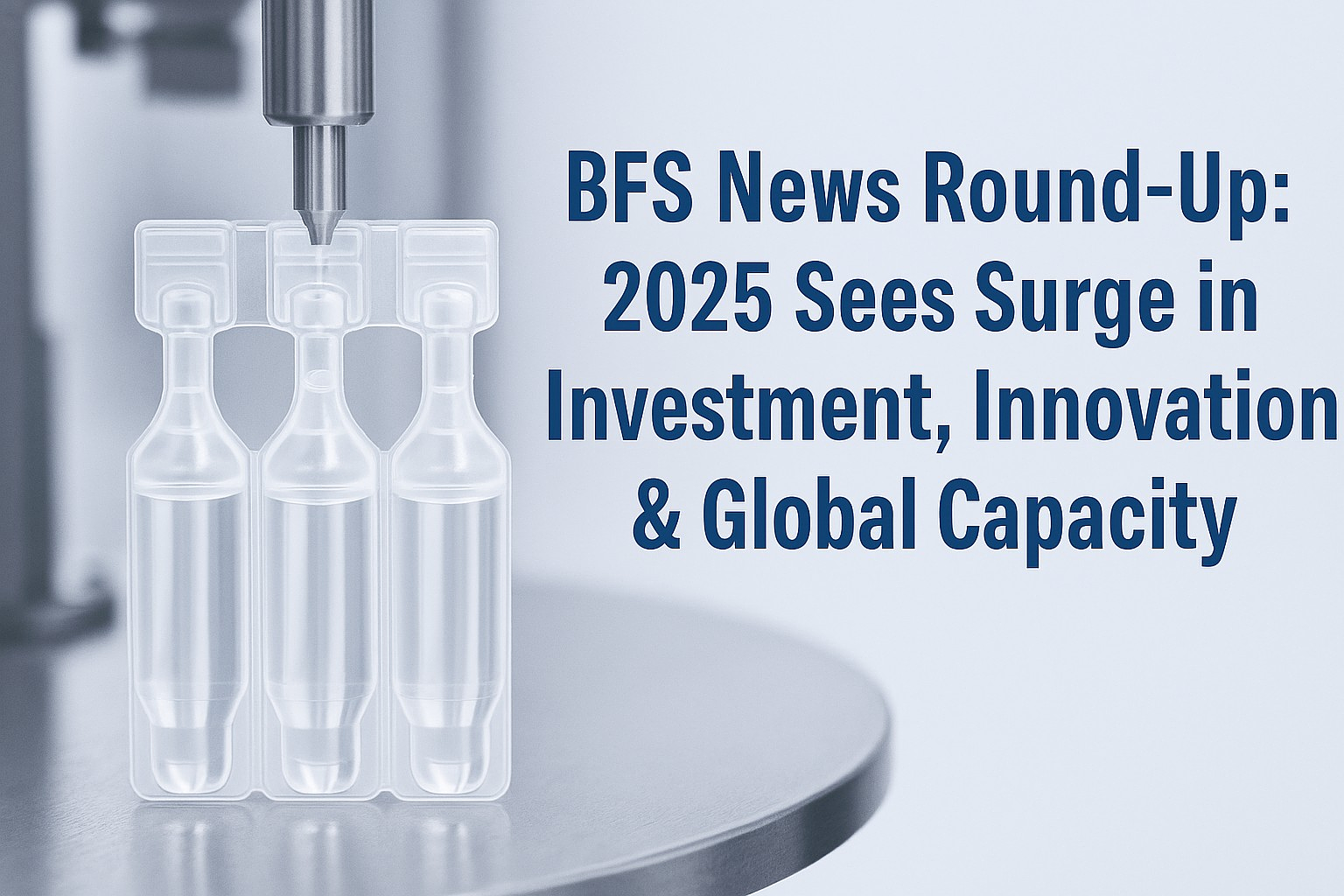
The Blow-Fill-Seal (BFS) industry is hitting new milestones in 2025, with major players accelerating production, securing regulatory approvals, and investing in sterile packaging lines.
This mid-year roundup highlights the latest developments shaping the BFS landscape: from ophthalmics to inhalation therapies and why now is the time to keep your eye on this fast-evolving technology.
💉 Amneal & Apiject Launch U.S. BFS Injectable Platform
In a landmark move, Amneal Pharmaceuticals and Apiject Systems have partnered to build a high-capacity BFS-based injectable facility in Brookhaven, New York. With an annual output of 250–300 million units (scalable to over 400 million), the project bolsters U.S. resilience in sterile injectable production and supports unit-dose delivery for critical medicines.
👁️ Recipharm Inks BFS Contracts for Ophthalmic Trials
Leading CDMO Recipharm recently secured BFS development deals with top ophthalmic firms, supporting both Phase 1 and Phase 2/3 clinical trials. These projects reflect a broader industry shift toward preservative-free, unit-dose formats, especially in sensitive applications like eye care.
🌬️ Ritedose Expands BFS Lines After FDA Approvals
Ritedose Pharmaceuticals has received FDA approval for several inhalation generics, including albuterol sulfate (2.5 mg/0.5 mL) and formoterol fumarate. To meet growing demand, the company has added its seventh BFS line, doubling single-dose capacity and reinforcing its leadership in respiratory treatments.
🏗️ Woodstock Sterile Invests $8M in High-Speed Packaging
Woodstock Sterile Solutions announced an $8 million investment into a state-of-the-art bottle packaging line that will process 250–300 parts per minute and deliver 85 million additional units annually. The system goes live in 2026 and aligns with the industry’s shift toward scalable, domestic BFS production.
📈 BFS Market Outlook: Headed for $5.2 Billion by 2034
Industry reports project the global BFS market will grow from $3.1 billion (2024) to over $5.2 billion by 2034, driven by:
- Demand for sterile, preservative-free packaging
- Rising adoption in ophthalmic, respiratory & injectable therapies
- Expanded CDMO capacity
- Regulatory and sustainability tailwinds
https://www.linkedin.com/feed/update/urn:li:activity:7345750876436766720?utm_source=share&utm_medium=member_desktop&rcm=ACoAABoTIY0B0PUI4CvS1wtUS2JYfIzcT5ZlR58
